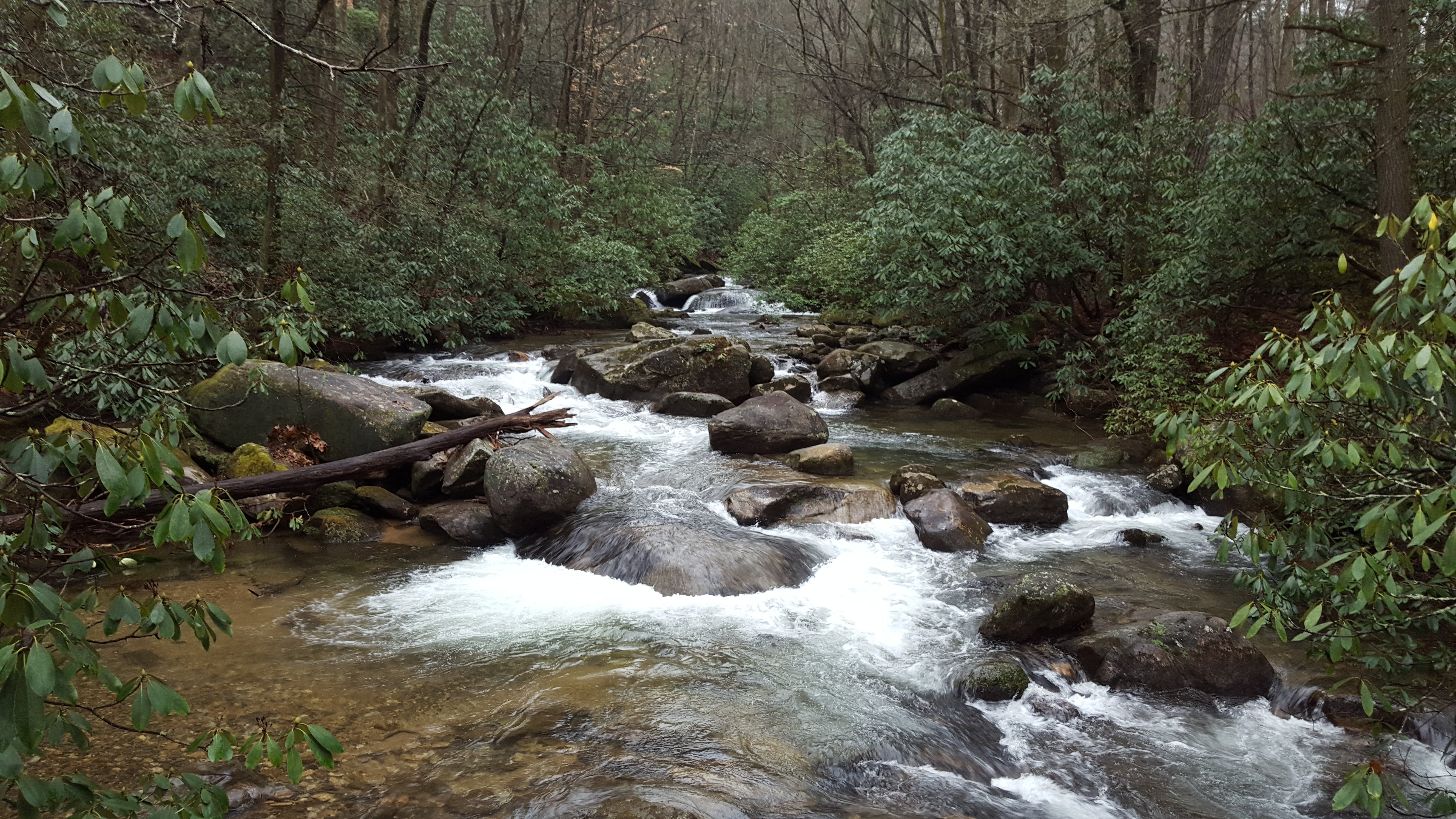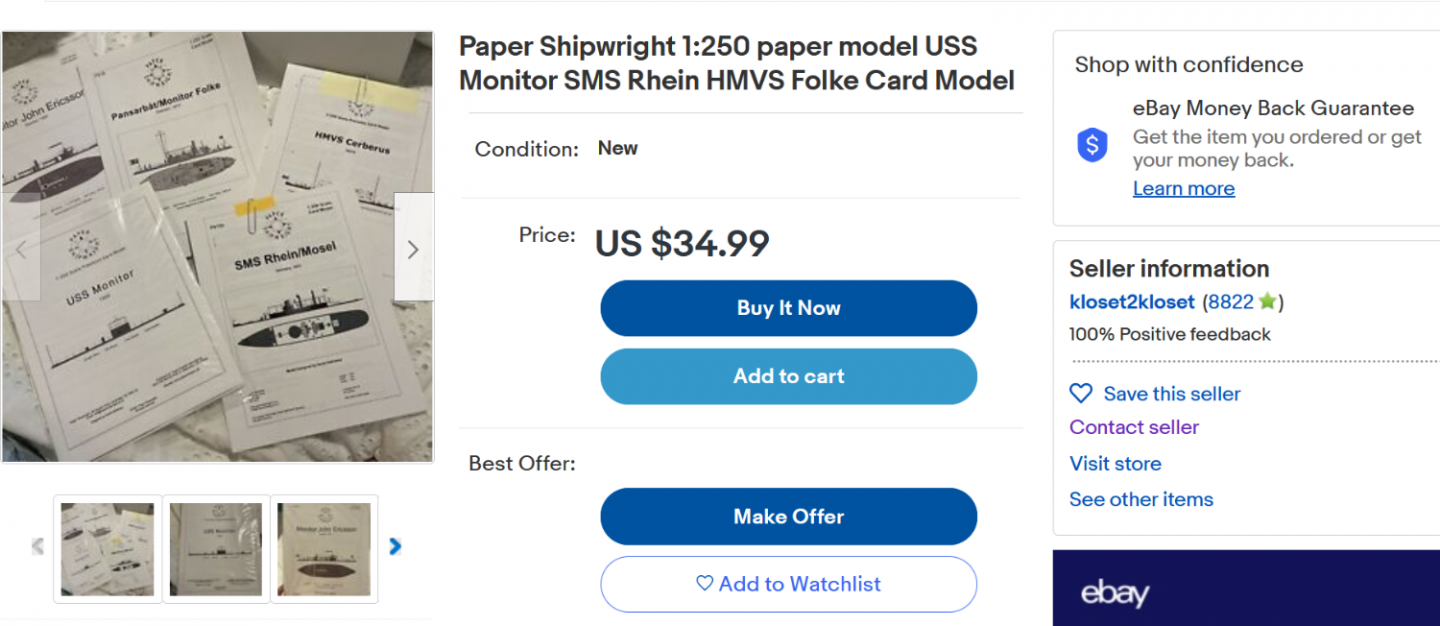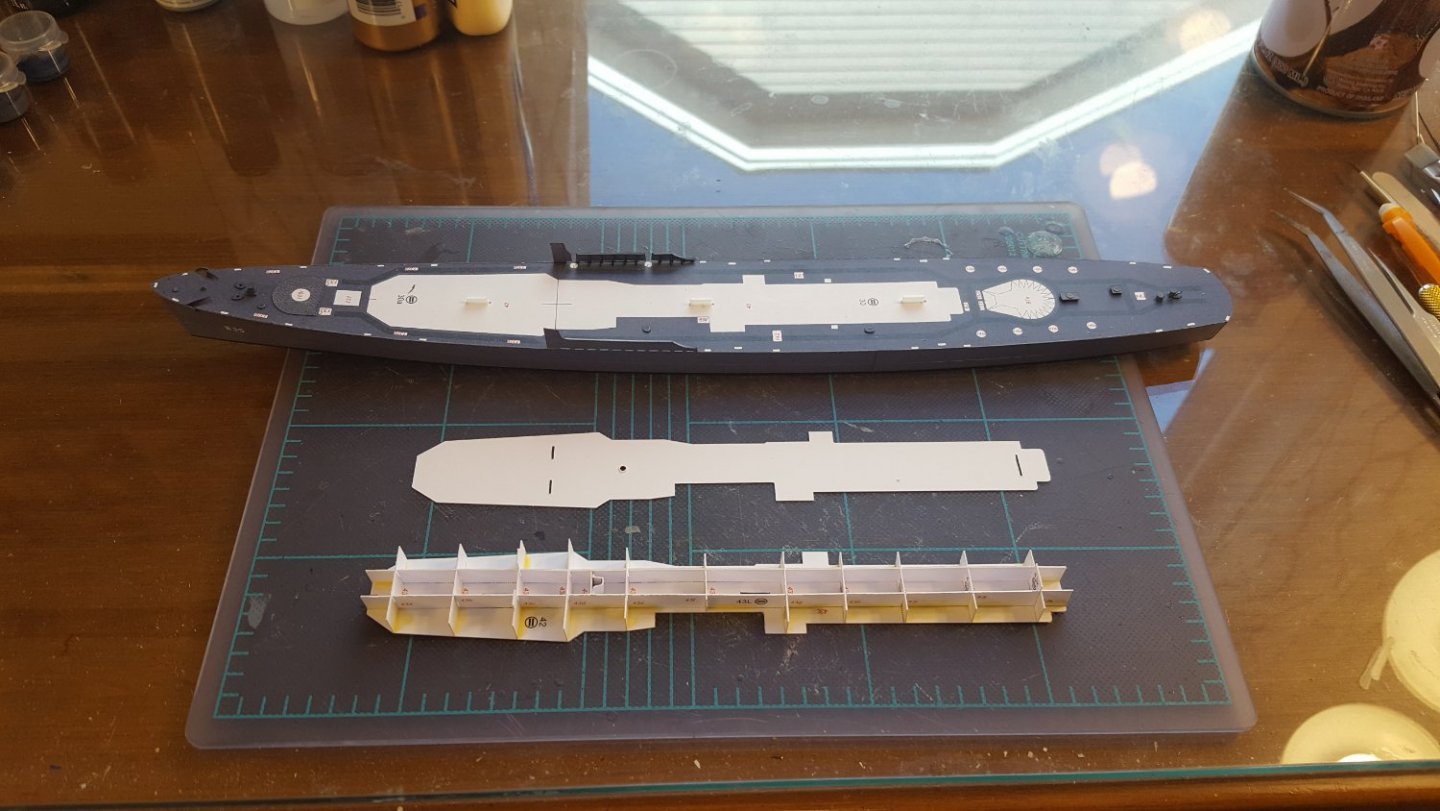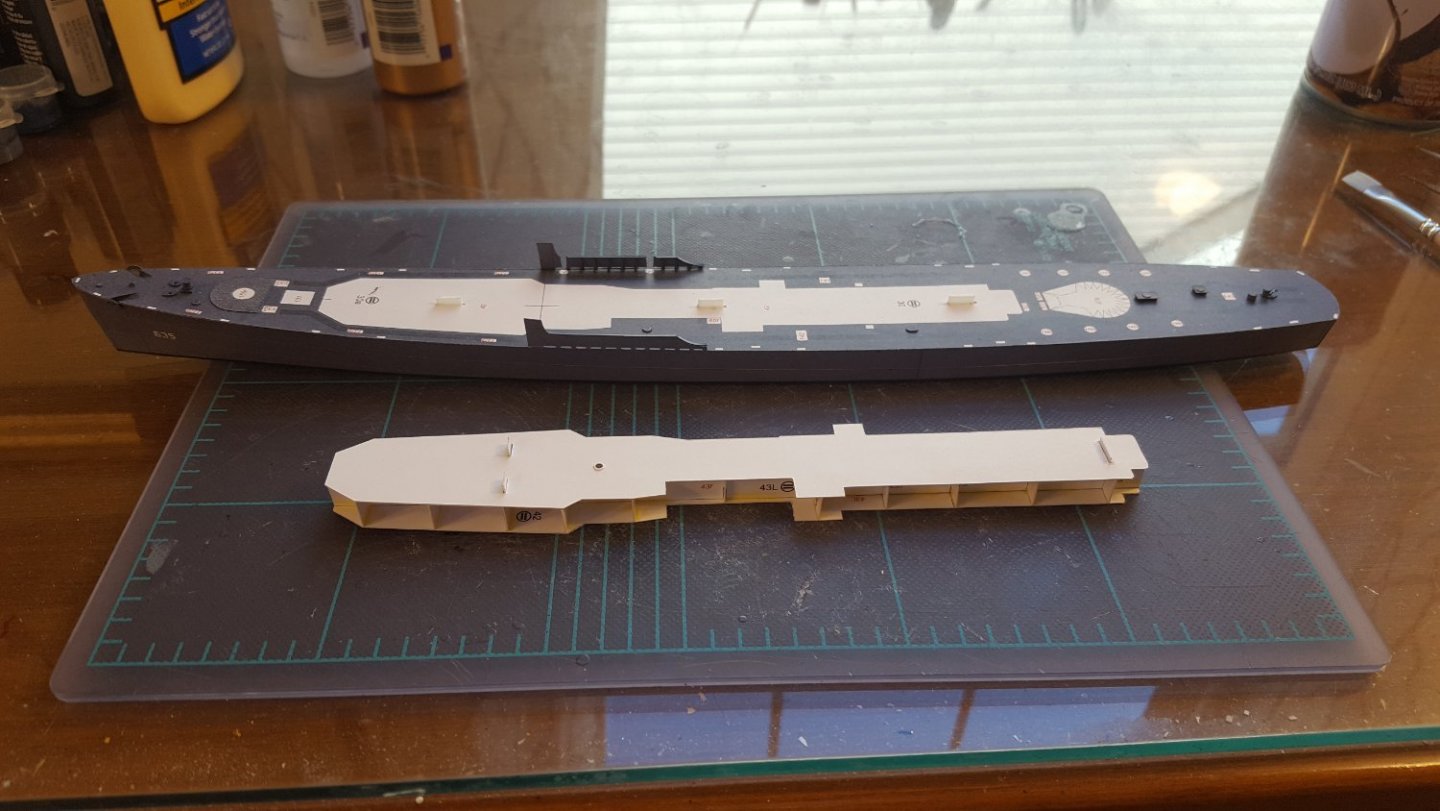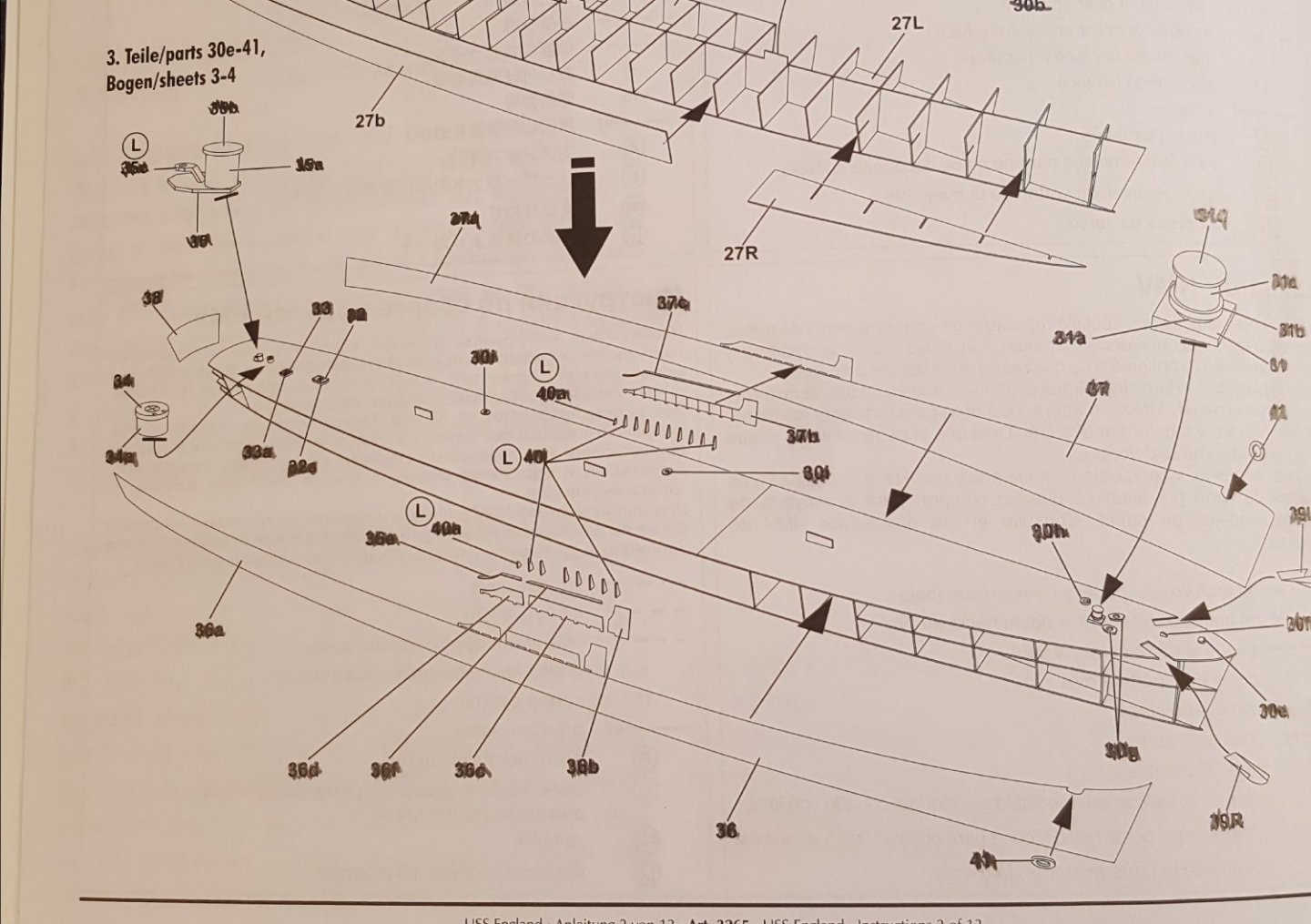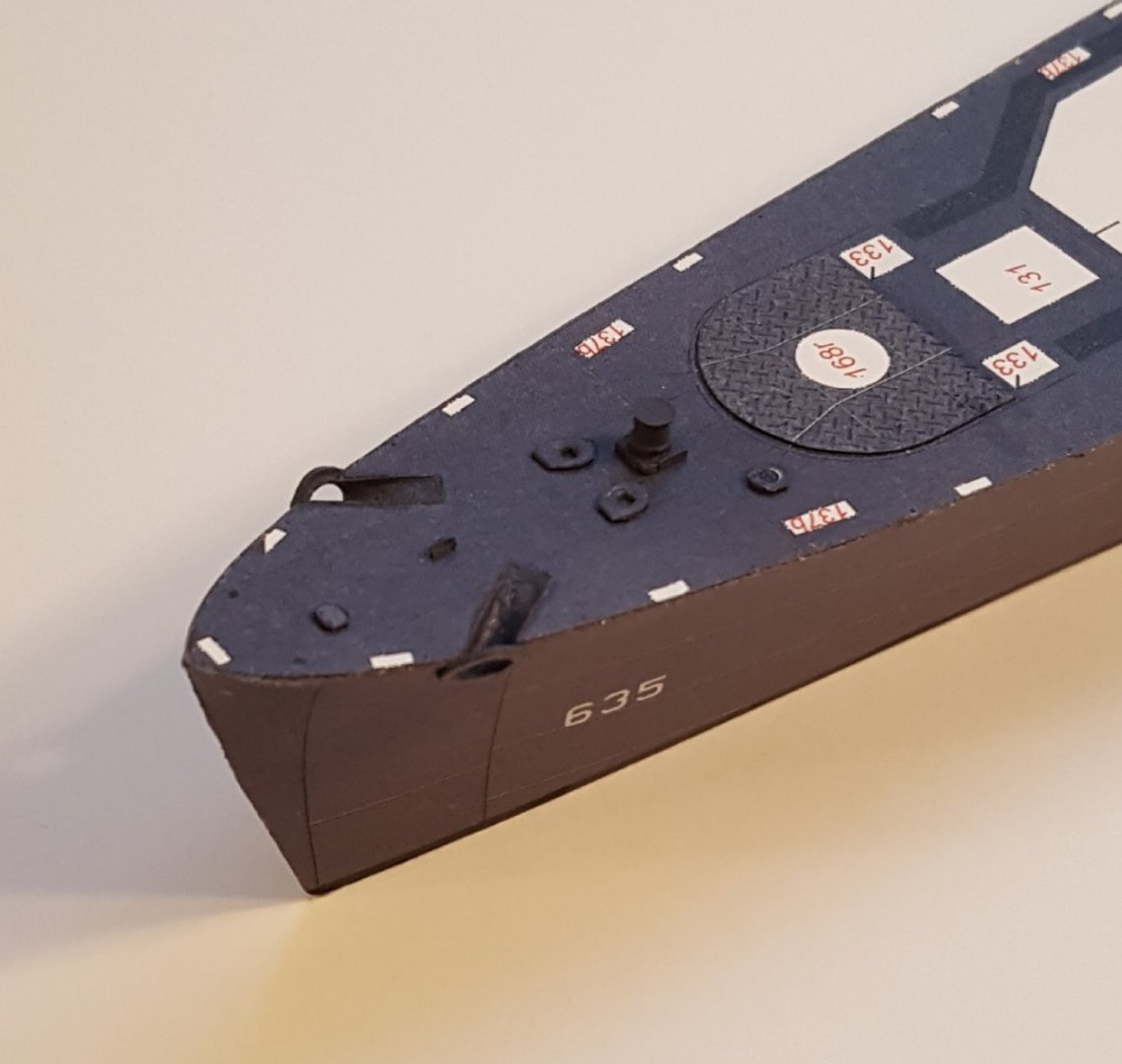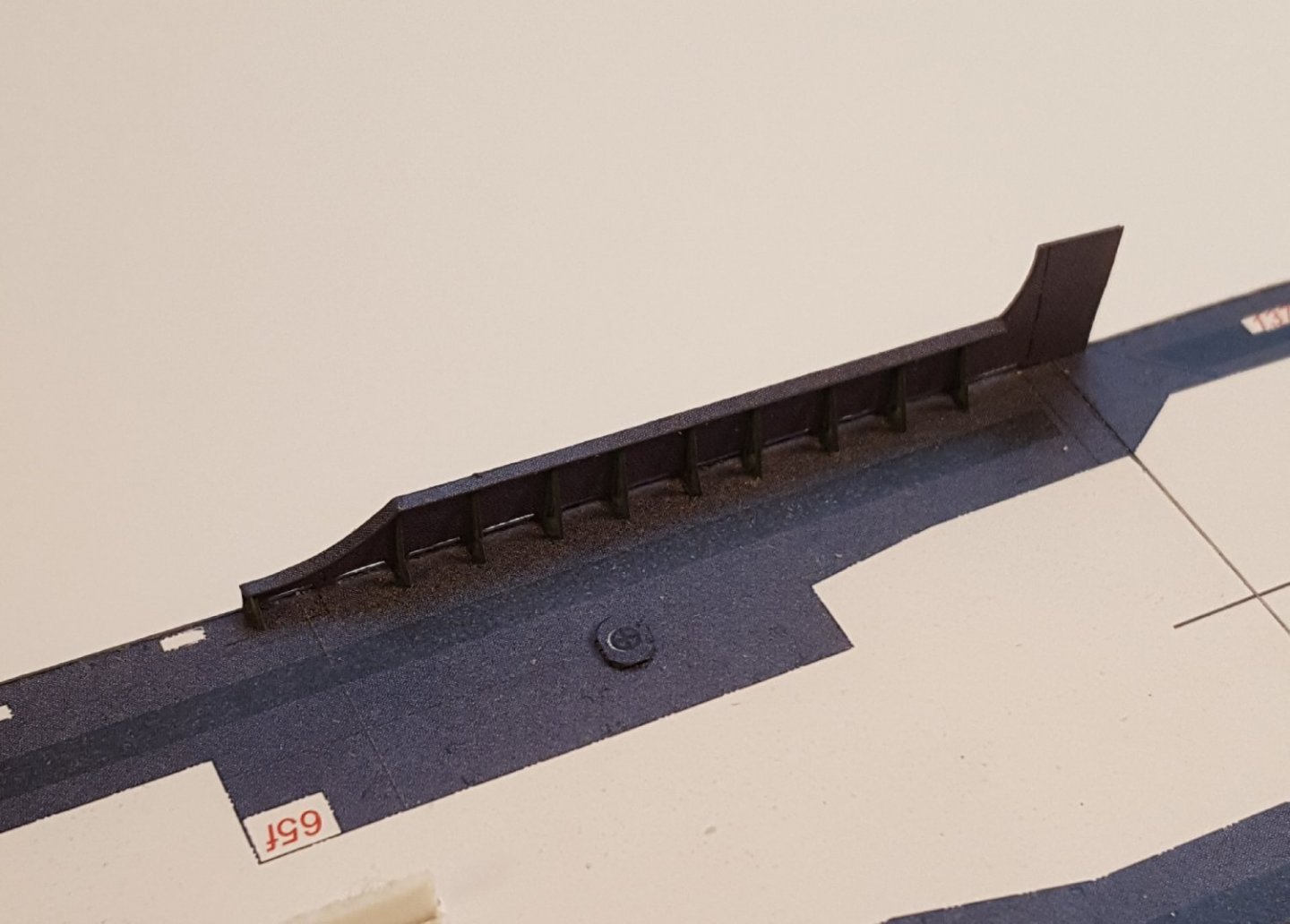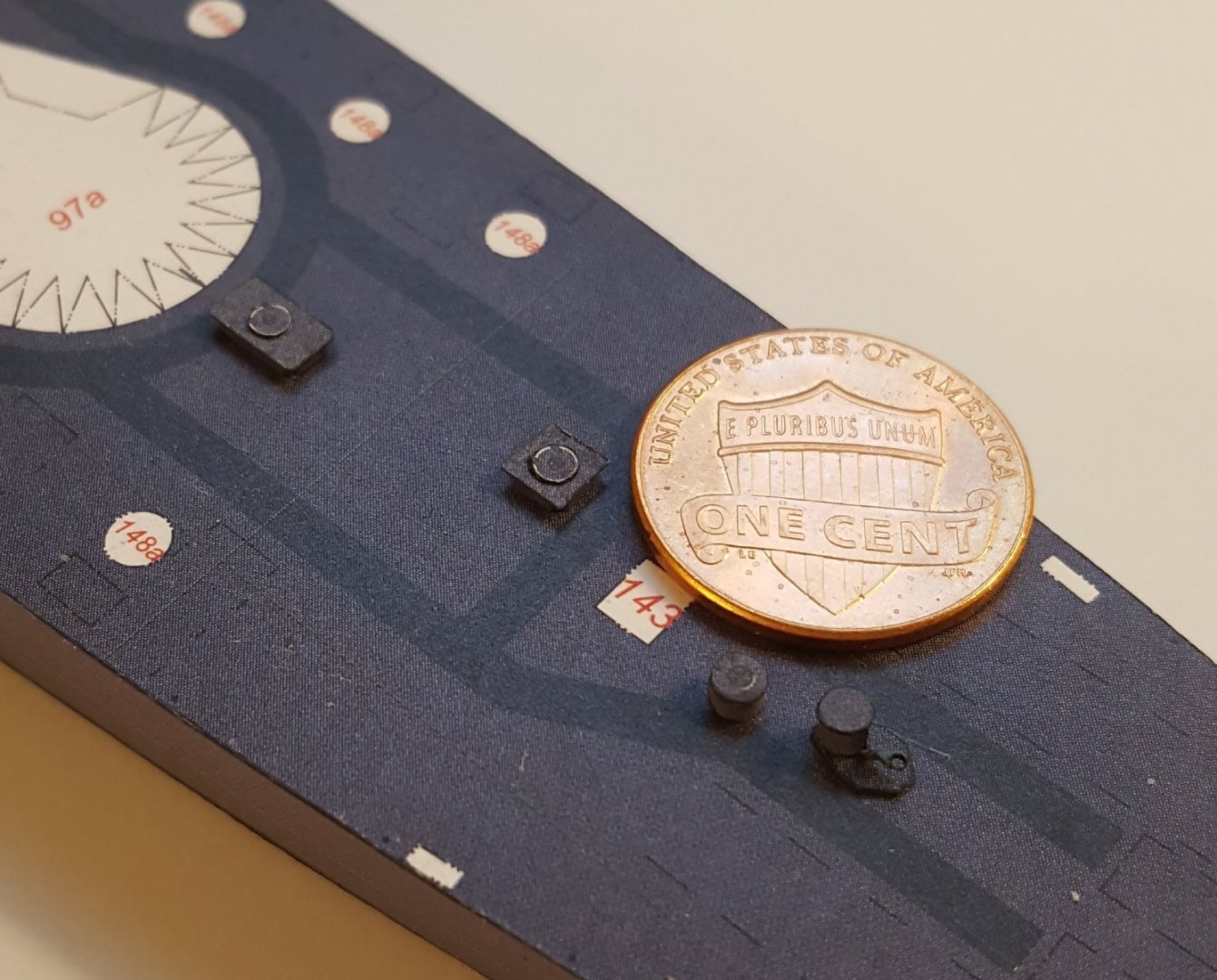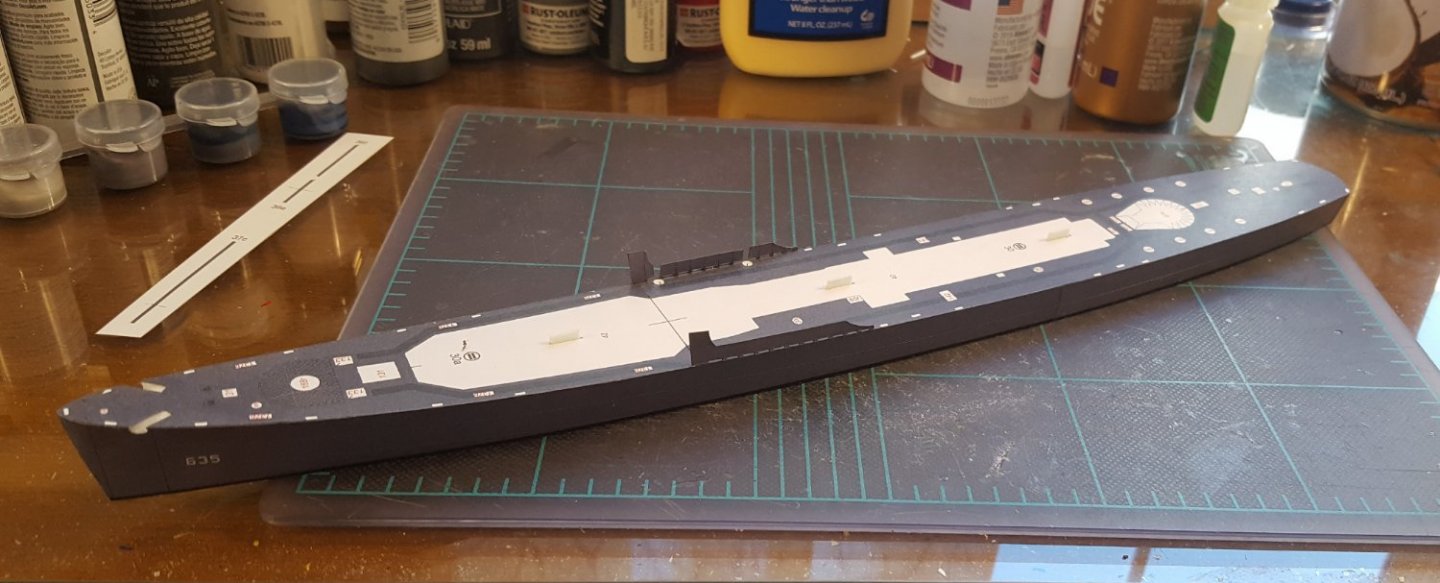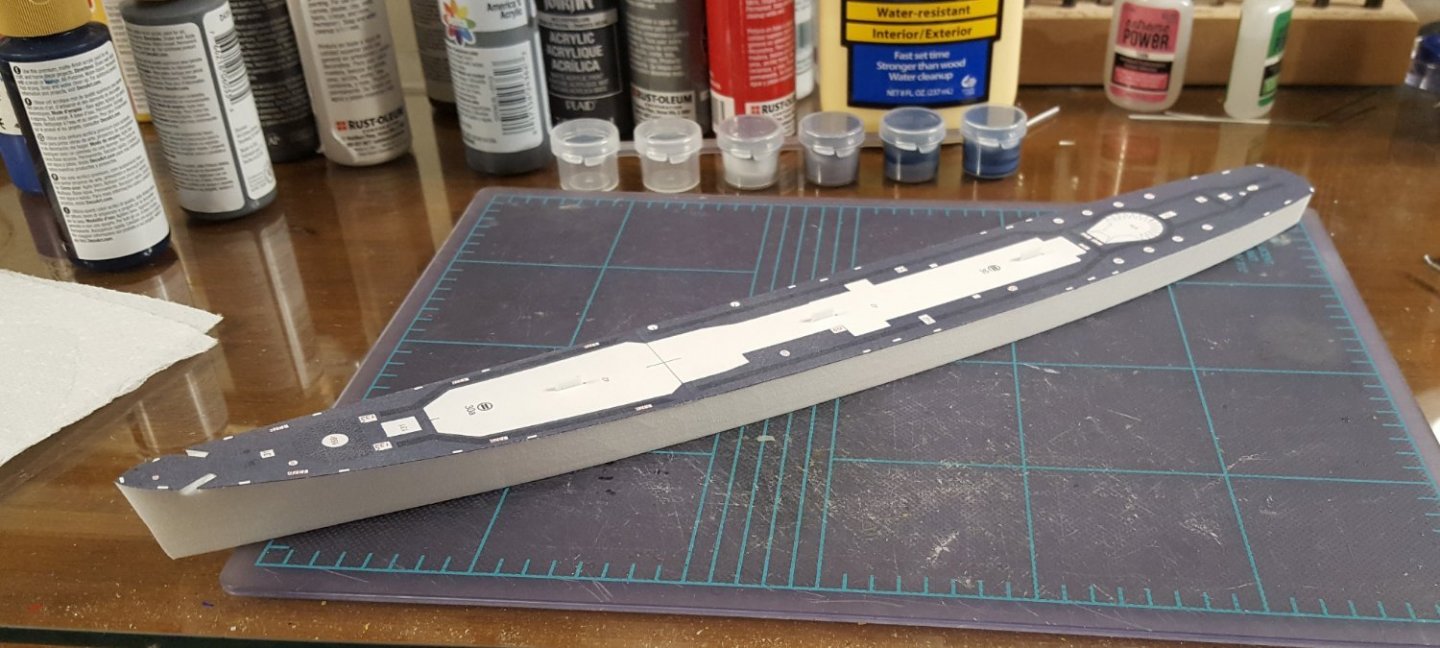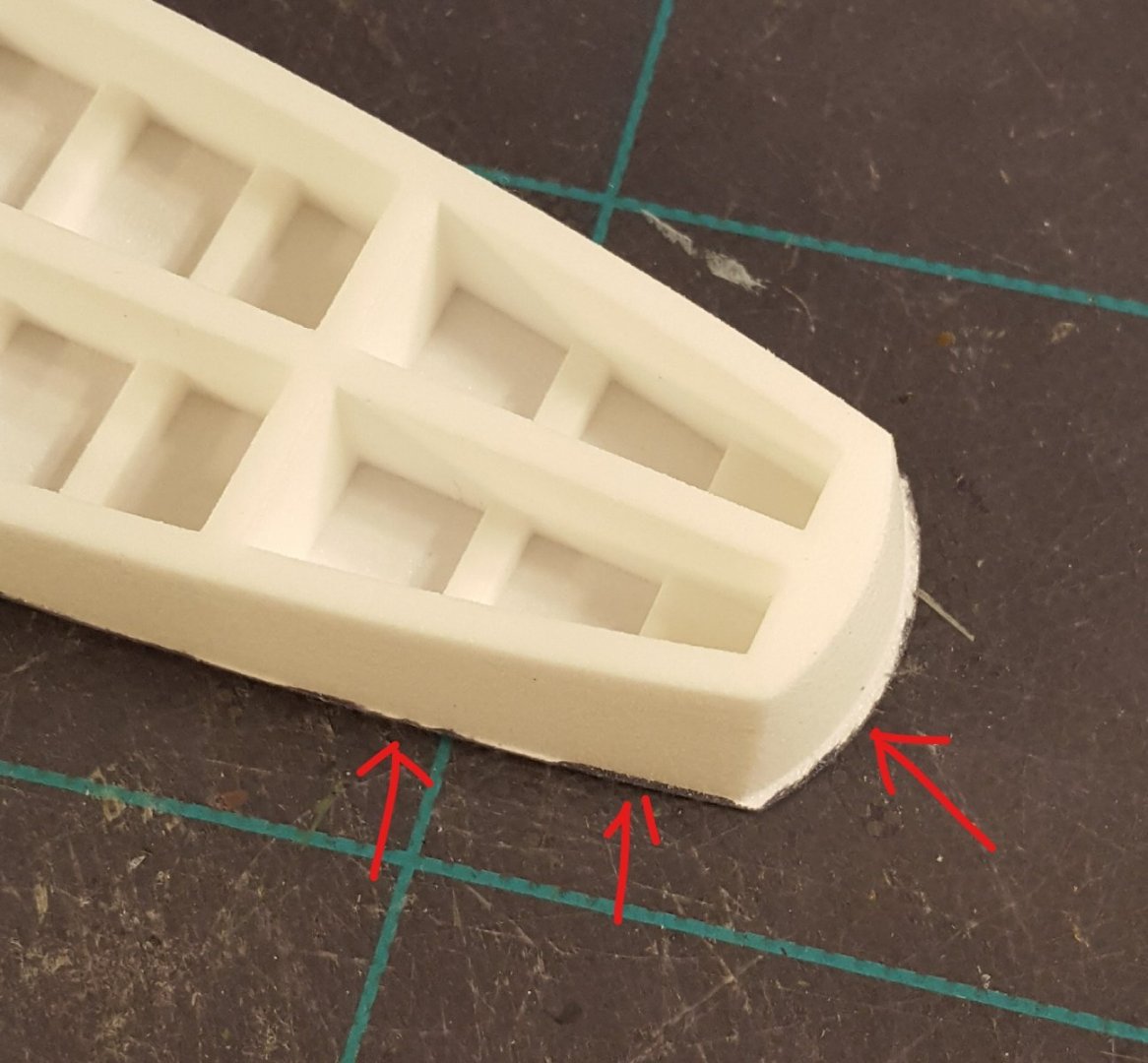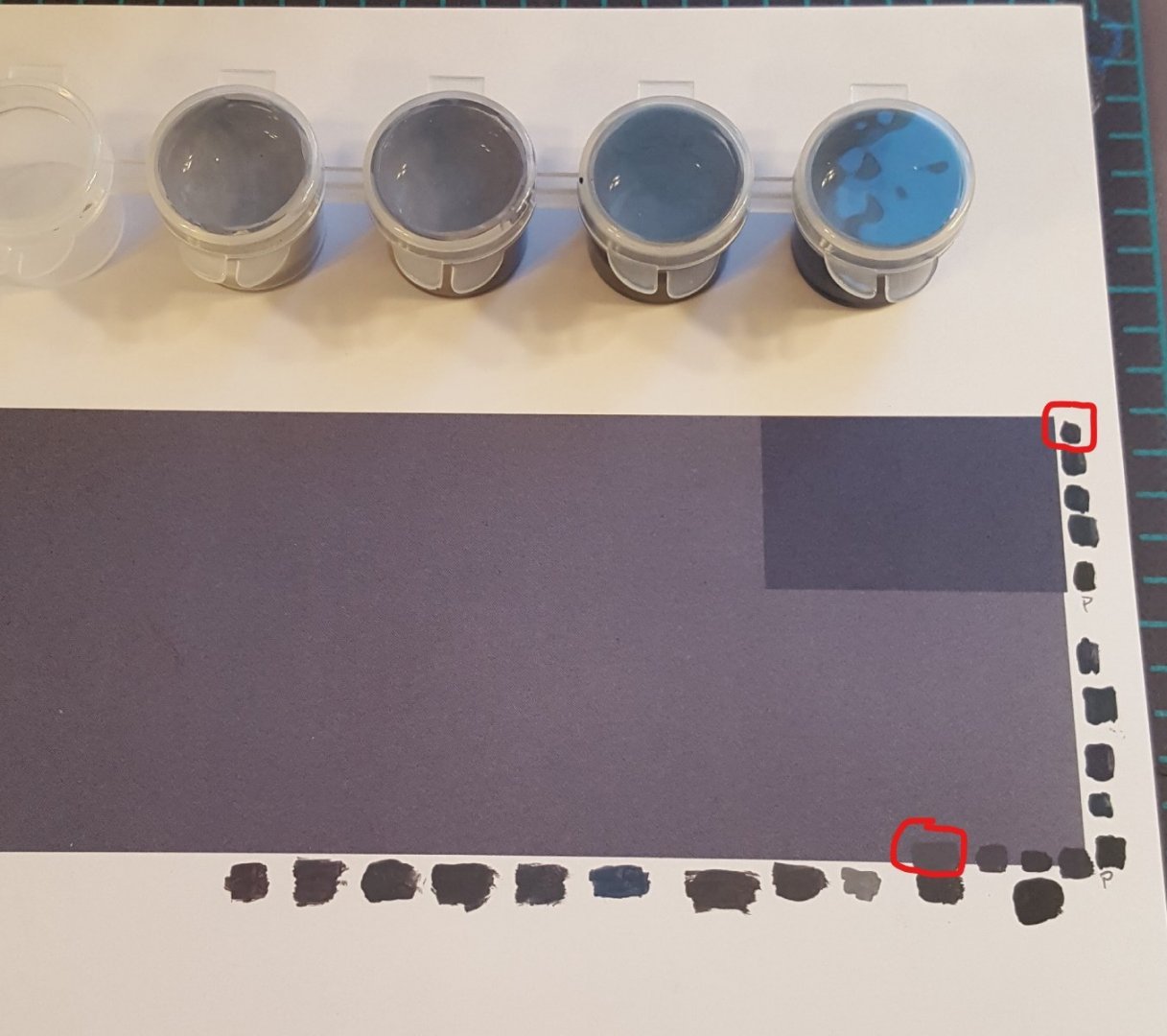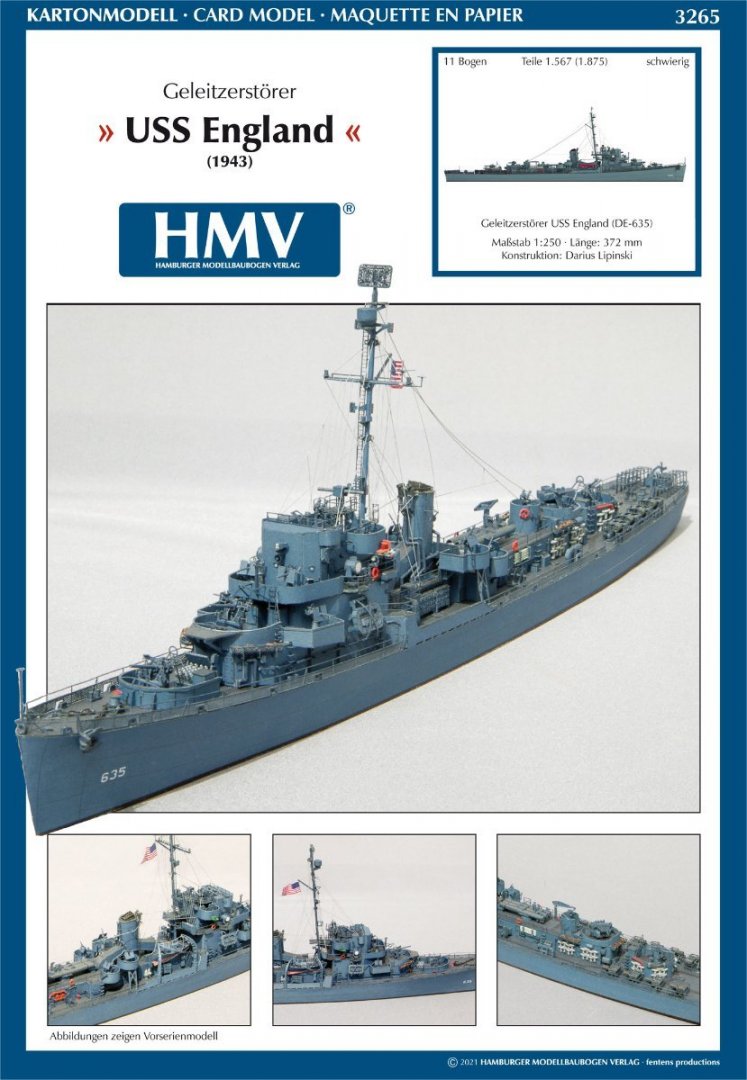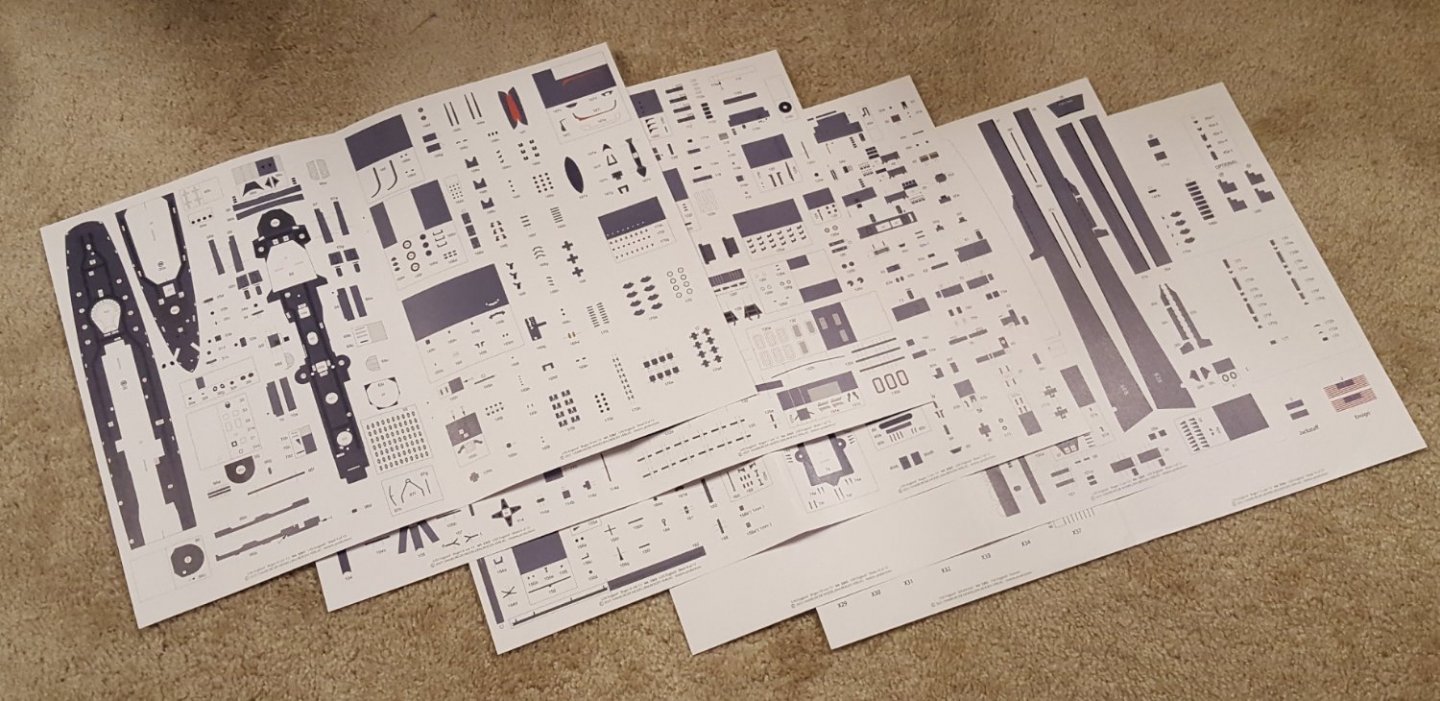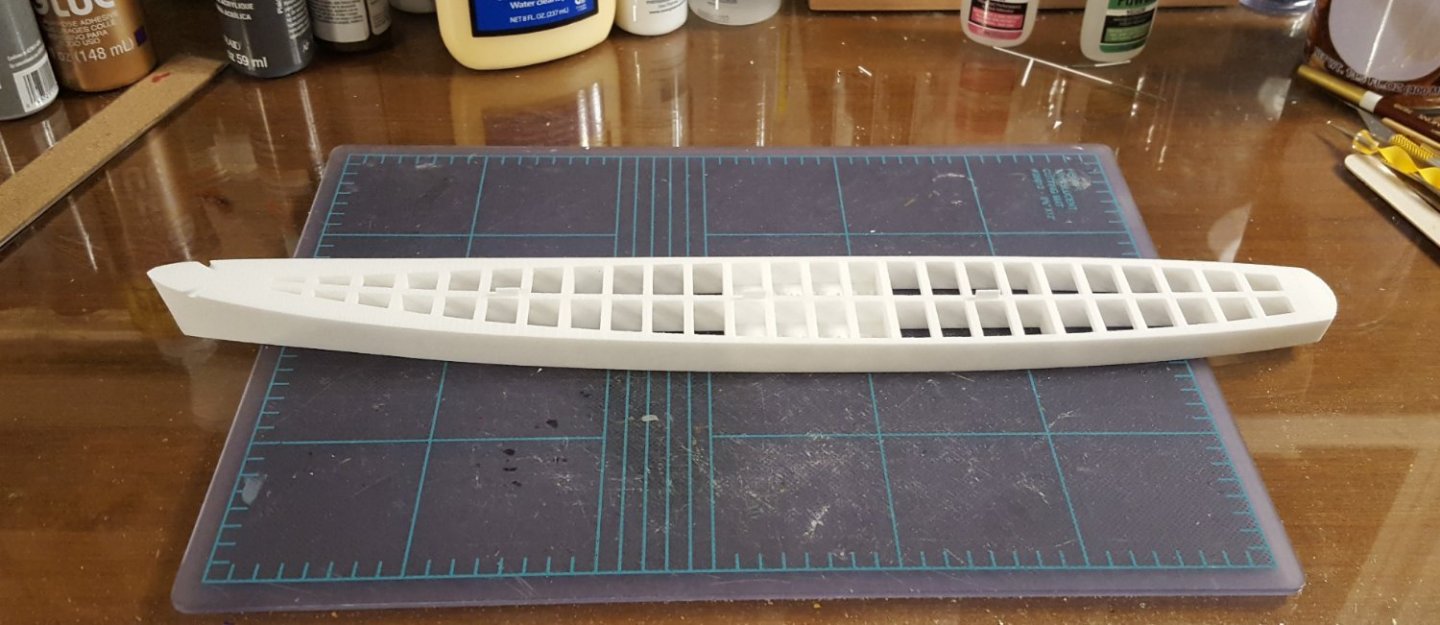-
Posts
10,356 -
Joined
-
Last visited
Content Type
Profiles
Forums
Gallery
Events
Everything posted by ccoyle
-
- 27 replies
-
- eBay
- kit piracy
-
(and 1 more)
Tagged with:
-
- 27 replies
-
- eBay
- kit piracy
-
(and 1 more)
Tagged with:
-

New Member Introduction and Need Some Advice
ccoyle replied to Artisan's topic in New member Introductions
Welcome! Unfortunately, there are several difficulties regarding your request. The first is the scale. The nature of wooden ship hulls necessarily limited their length, which happily for us modelers keeps wooden ship subjects in the size range that can produce reasonably-sized models in scales between 1/48 and 1/96. Steel hulls allowed larger ships to be built, which ultimately meant that models of them needed to be built in smaller scales to keep them at manageable sizes. For example, I'm currently building a WWII destroyer escort -- a small warship by the standards of the day. But even at 1/250 scale, the finished model will be roughly 14 inches in length. The second issue is the requirement for wooden kits. Once upon a time, wooden kits were the norm, but after WWII plastic kits quickly became the medium of choice, and the crude wooden kits that preceded them have become collectors' items. Civil War, WWI, and WWII warships are almost entirely available these days as either plastic, resin, or card models with the most popular scales being 1/100, 1/200, 1/250, and 1/400 for card, and 1/250 or 1/350 for plastic and resin. Only a handful of Civil War steam frigates are available as wooden kits, but none in 1/60. If you are adamant about finding a kit in a larger scale, the only practical solution I know of is to resort to RC kits. These typically include fiberglass or GRP hulls. To get a feel for what is available, you can check out the selection at Fleetscale. Hope that helps! -
Welcome aboard, and lovely result on your first effort!
- 4 replies
-
- Modellers Shipyard
- Finished
-
(and 2 more)
Tagged with:
-
I actually asked for a Swann-Morton handle and blades for Christmas, and even provided a link to the exact Swann-Morton products. But, instead, I received two (!) Chinese-made knock-offs. And since it's bad form to whine about Christmas gifts, I gave the knock-offs a tryout. I have the same issue with the blade tips flexing. But it's not all bad news -- I find the scalpel a better tool for chopping tasks, since the blades have a narrower kerf and therefore produce a less-beveled cut.
-
4: Superstructure Framing Short update today, but this takes care of diagram #4. All of the superstructure profile former and bulkhead parts are doubled. This is a departure from the usual HMV practice, but I hope it will become a standard for them -- the resulting parts are of course much more rigid than single-layer card. The framing is built in the usual egg-crate style, but it must be done atop the hull, because the superstructure is not perfectly flat lengthwise but slightly curved. Once the frames were set, a small box for the lower mast was added, then the top was glued on. There are tabs to help situate both the superstructure top to its framing and the superstructure itself atop the hull. You can see that the actual superstructure surface will be added later. Next, the superstructure sides will be constructed, and they have quite a few bits and pieces that must be added to them, e.g. doors, grab rails, hose reels, etc., etc. Total sidetrack issue for the day: I came across a batch of old X-acto Z blades in my tool supplies and then subsequently rediscovered why I never used all of them up. Although they are advertised as sharper and more durable than ordinary blades, they have one very bad attribute for card modelers: their tips are too flexible. When downward pressure is applied to a Z blade, the tip bends slightly, causing the blade to want to wander away from the line being cut. This is obviously an undesirable trait in a card modeling tool. I quickly switched back to my el cheapo Excel blades.
-
Pretty much my exact thought as I read through your description of the process. Congratulations on surviving this task!
- 238 replies
-
- Robert E Lee
- steamboat
- (and 3 more)
-
3: Hull It dawned on me that a good way to track these updates would be by linking them to the numbered construction diagrams, of which there are 27, plus an optional 28th. The printed hull allowed me to skip diagrams 1 and 2. With this update, I am now done through diagram 3. Forward we have the hawse pipes, hawse pipe lips, capstan, and platform for the forward 3"/50. Amidships are the solid bulwarks and their stanchions, which I assume are frame extensions. These are the laser-cut replacement parts. And aft we have various hatches. For parts that are only one card sheet thick, I'm using an ordinary gray felt-tip marker for edge coloring; at pretty much any viewing distance, it's indistinguishable from the mixed paint color. For our foreign friends, an American penny is 19 mm wide. This photo shows assemblies 32-35 in place on deck. Note the spot marked "143." 😮 Cheers!
-
Eric, that's a good list, and yes I have discovered many of the things you listed through trial and error. The best way to minimize touch-ups for card models is to likewise minimize visible seams and boo-boos. The first comes down to a combination of kit design and skillful cutting out of parts, the latter is simply a matter of practice and paying attention during construction.
-
Hull Siding The hull siding is now complete. Took a while because the solid amidships bulwarks have inner skins, the starboard inner bulwark piece is in three parts (to leave room for boat davits later), and the bulwarks originally had printed scuppers, which I decided to cut out. I'm about 95% satisfied with the job -- I have some iffy seam work at both ends, I wound up with a mystery glue spot on one side, and I also got a tiny drip of water on one side. These have all been touched up as best I could. Port-side hull: And the stern, which I did build up a bit with scrap card before adding the printed part: Next up is adding the frame extensions needed to toughen up the easily-bent bulwarks.
-
Only rarely, but if you want to OD on card model eye candy, then just browse through the gallery HERE.
-
There are several particular skills that set master card modelers apart from the rest of us, and seam work is one them. Matching colors helps make seams less apparent. Only our Polish friends seem capable of making them disappear entirely.
-
The difference is not critical on the edges and only becomes a potential issue if large touch-ups on printed surfaces become necessary. Then the touched-up areas are easier to spot unless the color match is pretty darn close.
-
Hull I serendipitously discovered that rubbing the sprayed parts with a bare finger will sort of "buff out" the splotchy look and restore (mostly) the proper black color. So here's the deck (two parts) glued down to the 3D-printed hull. For the most part, the fit is spot-on, and of course there are no waves or buckles -- nice. There is, however, some overhang at the stern of as much as 1.5 mm. Nothing to panic about yet. I will further assess the situation when I get the hull sides ready to apply. The fix may be as simple as adding a layer or two of card to build the hull up a bit. Cheers!
-
Baby Steps Well, one small triumph and one sorta boo-boo. I started by spraying matte clear finish on the parts. Such is my usual practice, but I had another reason to do so this time around. This kit is printed on semi-gloss stock, and the sheen didn't seem right for a fighting ship in the Southwest Pacific. I did a test-spray last night on a color swatch, and everything seemed okay, so I sprayed the remaining parts. And everything does look okay -- except for where anything is black, which, happily, is not too much. The black parts ended up looking a bit splotchy. Oh well -- shouldn't be too obvious on the finished model. We'll call it weathering. Next I set about making edge colors. Shouldn't be too difficult, right? After all, there's basically only two, and they happen to be different shades of the same color. Ha! The problem is, the color is USN Measure 21 dark blue-gray, but it's printed, not painted. Four-color printing creates colors by blending different saturations of black, yellow, cyan, and magenta dots, and you can actually see these if you squint closely enough. From a distance, the printed color looks gray, but if you look closely you can see that the "gray" has a kind of lilac tone to it -- created by the combination of cyan and magenta dots. It was really hard to recreate this effect, as you can see by my many attempts below. I got the darker shade close enough after just a few tries, but the lighter shade was a booger. The difficulty lay in that red needed to be added to the mixture to push the tone from gray toward toward the desired lilac tone. But my first attempt, not shown, wound up missing the mark and being plain ol' dark purple (or dare I say 'Deep Purple'?) -- too much red. So, after many tweaks, I got the second attempt closer to the desired color (circled). It's not a perfect match, but it looks better in real life than in this crummy cell phone picture, and the tone is right if not the exact shade. My fear is that if I add any more red, I'll push the shade too far into purple territory and have to start all over again. Next up will be cutting the hull sides and deck. Using the 3D-printed hull eliminates the need to cut out and glue forty-seven hull skeleton parts!
-
Eh, you did more than just survive -- you did great! I hope you will tackle another at some point.
-
Well, that's the goal at least. Fingers crossed! Define 'reasonable.' 😆 It's US$64, so it's not cheap, but it saves a whole lot of work and should provide a superior result. We'll see.
-
Okay, back to ships! I'm really biting off a lot on this project, but it's such a nice model that I just had to take a crack at it. Hopefully I will be up to the challenge. I wrote a review of this kit, which you can read HERE, so I won't go into great detail about it here. I will, though, repeat that if you like this model and would like to get your hands on a copy, or perhaps try a different card kit, be sure to check out all the HMV kits available from Fentens Papermodels. Unlike my recent aircraft builds, I expect this project to take longer than a month. How long, I can't say. We'll see how it goes and maybe take a break or two if necessary. One nice thing about this project is that I will need only a very small number of edge colors -- the ship is depicted entirely in Measure 21 dark blue-gray. But . . . it has a considerable number of parts -- close to 2000 in total. Ten pages -- wowzers! Happily, I have the laser-cut detail set to replace many of those parts. It consists of six frets. And now I can share what Santa brought me this past Christmas. This lovely 3D-printed hull, available from Shapeways, will replace ALL of the usual egg-crate construction. Only the external skins need to be applied. This will be the most stable card ship hull I have ever worked on. So, that will serve for an introduction. The first thing I will need to do is the usual spraying of the parts sheets. Hopefully tomorrow it will be warm enough in the garage to move forward with that task. Cheers!
About us
Modelshipworld - Advancing Ship Modeling through Research
SSL Secured
Your security is important for us so this Website is SSL-Secured
NRG Mailing Address
Nautical Research Guild
237 South Lincoln Street
Westmont IL, 60559-1917
Model Ship World ® and the MSW logo are Registered Trademarks, and belong to the Nautical Research Guild (United States Patent and Trademark Office: No. 6,929,264 & No. 6,929,274, registered Dec. 20, 2022)
Helpful Links
About the NRG
If you enjoy building ship models that are historically accurate as well as beautiful, then The Nautical Research Guild (NRG) is just right for you.
The Guild is a non-profit educational organization whose mission is to “Advance Ship Modeling Through Research”. We provide support to our members in their efforts to raise the quality of their model ships.
The Nautical Research Guild has published our world-renowned quarterly magazine, The Nautical Research Journal, since 1955. The pages of the Journal are full of articles by accomplished ship modelers who show you how they create those exquisite details on their models, and by maritime historians who show you the correct details to build. The Journal is available in both print and digital editions. Go to the NRG web site (www.thenrg.org) to download a complimentary digital copy of the Journal. The NRG also publishes plan sets, books and compilations of back issues of the Journal and the former Ships in Scale and Model Ship Builder magazines.

